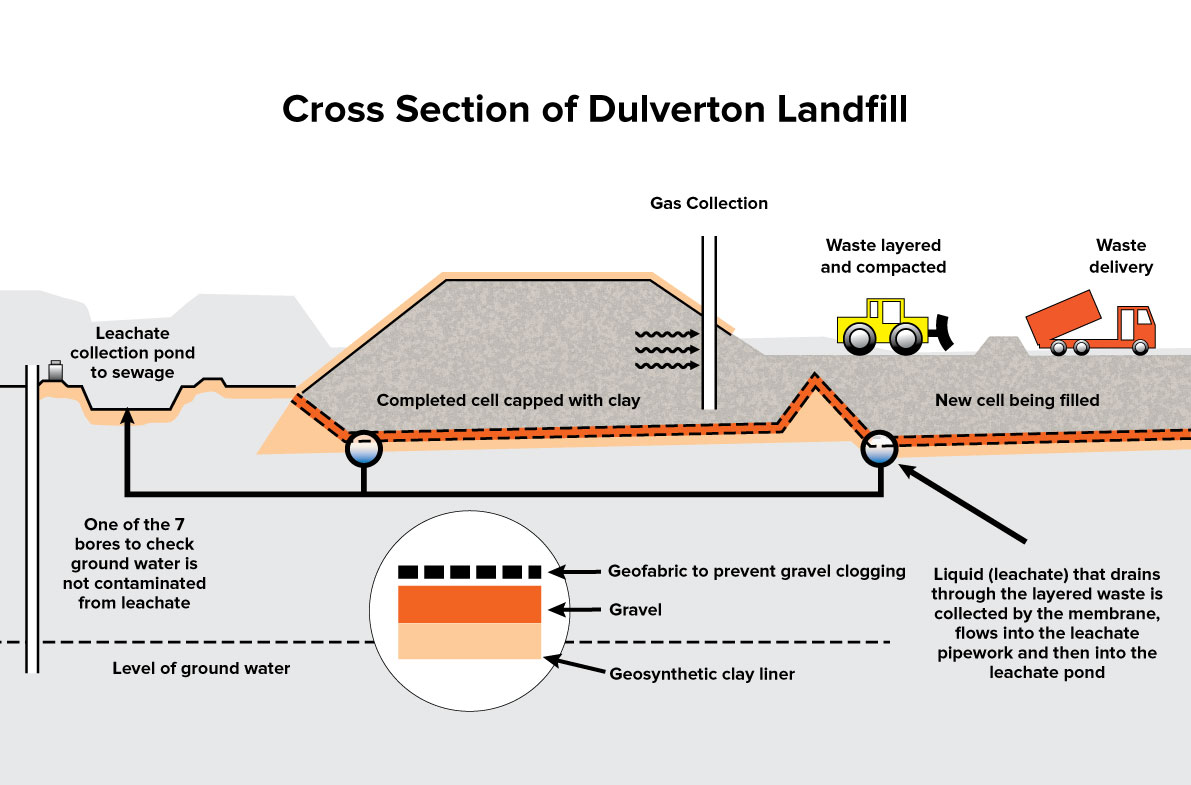The DWM landfill has been scientifically designed to operate efficiently and protect the soil, water and air quality of the Tasmanian environment.
The landfill is constructed as a series of cells. The site of each cell is first levelled with a slight incline to ensure all liquid drains in the same direction. Cells are precision-engineered to encourage any moisture coming from the waste to drain into a specially constructed and HDPE-lined leachate pond.
Waste from municipal and other sources goes into the working area of the cell and is spread evenly to about 300mm before being compacted. The DWM landfill was the first in Tasmania to implement machine guidance for its landfill compactor. This technology has improved the landfill’s waste compaction density and operational efficiency, and reduced surveying costs.
DWM landfill cells now feature geo-synthetic clay lining and have a manufactured hydraulic barrier of natural sodium bentonite and geotextiles to safely contain and direct moisture.
Leachate control is one of the most important aspects of landfill management and involves safely containing and transferring leachate via 7kms of pipeline into the sewerage system for safe processing.
After waste in a cell is compacted, it is covered with a layer of inert material such as soil, sand or crushed glass to minimise odour and the risk of rodents. The waste cell is built up layer by layer until it reaches its maximum height, then it is capped with a layer of clay to prevent rain from entering the waste hill and topped with soil before being revegetated.
The DWM landfill was the region’s first to operate a landfill gas system to extract methane and assist in annual carbon abatement of approximately 10,000 tonnes CO2-e. Read more about the Landfill Gas Extraction Project here.
DWM’s independently certified and audited Environmental Management System (EMS) is embedded in landfill operations, used daily by staff, and backed by comprehensive environmental policies and processes. The landfill, with a life of 70-plus years, has a detailed aftercare plan which is voluntarily cash-funded.

